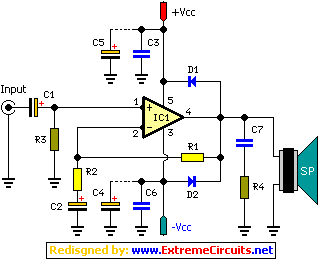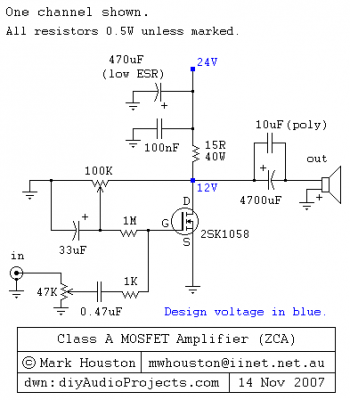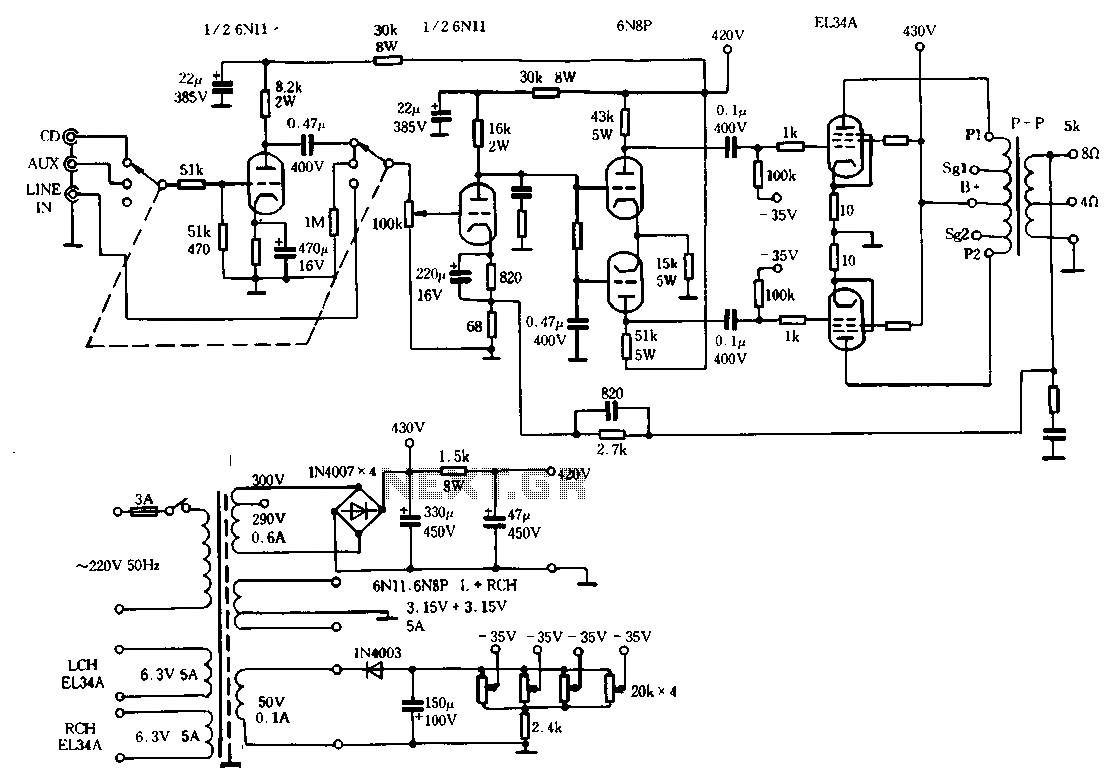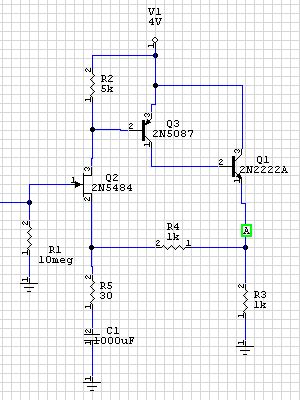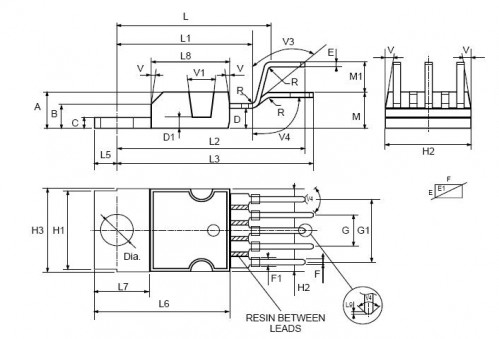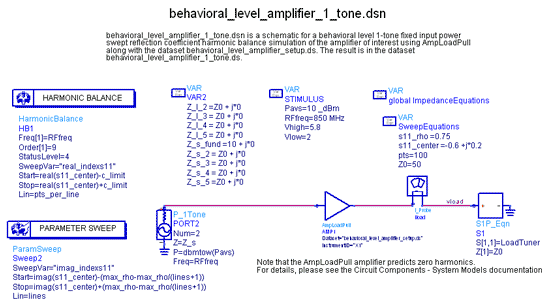
Jfet bipolar cascode video amplifier
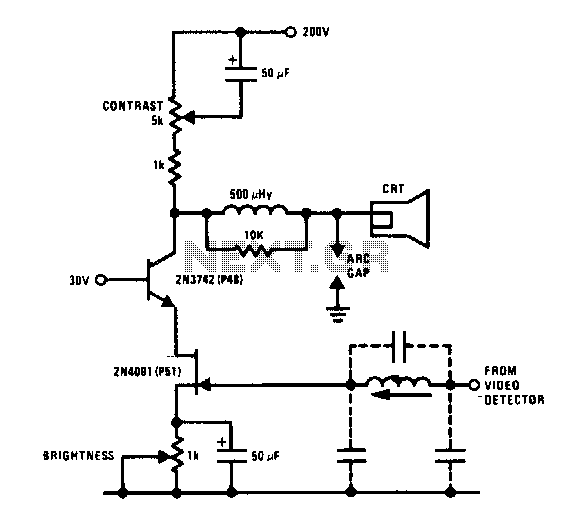
The JFET-bipolar cascode circuit will provide full video output for the CRT cathode drive. Gain is about 90. The cascode configuration eliminates Miller capacitance problems with the 2N4091 JFET, thus allowing direct drive from the video detector. An m-derived filter using stray capacitance and a variable inductor prevents 4 MHz sound frequency from being amplified by the video amplifier.
The JFET-bipolar cascode circuit serves as an effective solution for driving the cathode of a CRT, ensuring that the video output is robust and of high quality. With a voltage gain of approximately 90, this circuit configuration enhances signal integrity while minimizing distortion. The use of the 2N4091 JFET in a cascode arrangement is particularly advantageous, as it mitigates Miller capacitance effects that could otherwise hinder performance. By effectively isolating the input and output stages, the circuit allows for direct interfacing with the video detector, facilitating seamless signal transfer without the degradation typically associated with high-frequency applications.
In addition to the primary function of video amplification, the circuit incorporates an m-derived filter designed to address specific frequency challenges. This filter utilizes stray capacitance in conjunction with a variable inductor to suppress unwanted 4 MHz sound frequencies that may interfere with the video signal. By strategically managing these frequencies, the filter ensures that the video amplifier operates within its intended bandwidth, thus improving overall system performance and fidelity.
The combination of the JFET-bipolar cascode circuit and the m-derived filter exemplifies a comprehensive approach to video signal processing, providing both high gain and effective noise reduction. This design is particularly suitable for applications where high-quality video output is critical, such as in CRT displays and other analog video systems.The JFET-bipolar cascode circuit will provide full video output for the CRT cathode drive. Gain is about 90. The cascode configura-tioneliminates Miller capacitance problems with the 2N4091 JFET, thus allowing direct drive from the video detector An m-derived filter using stray capacitance and a variable inductor prevents 4 MHz sound frequency from being amplified by the video amplifier.
The JFET-bipolar cascode circuit serves as an effective solution for driving the cathode of a CRT, ensuring that the video output is robust and of high quality. With a voltage gain of approximately 90, this circuit configuration enhances signal integrity while minimizing distortion. The use of the 2N4091 JFET in a cascode arrangement is particularly advantageous, as it mitigates Miller capacitance effects that could otherwise hinder performance. By effectively isolating the input and output stages, the circuit allows for direct interfacing with the video detector, facilitating seamless signal transfer without the degradation typically associated with high-frequency applications.
In addition to the primary function of video amplification, the circuit incorporates an m-derived filter designed to address specific frequency challenges. This filter utilizes stray capacitance in conjunction with a variable inductor to suppress unwanted 4 MHz sound frequencies that may interfere with the video signal. By strategically managing these frequencies, the filter ensures that the video amplifier operates within its intended bandwidth, thus improving overall system performance and fidelity.
The combination of the JFET-bipolar cascode circuit and the m-derived filter exemplifies a comprehensive approach to video signal processing, providing both high gain and effective noise reduction. This design is particularly suitable for applications where high-quality video output is critical, such as in CRT displays and other analog video systems.The JFET-bipolar cascode circuit will provide full video output for the CRT cathode drive. Gain is about 90. The cascode configura-tioneliminates Miller capacitance problems with the 2N4091 JFET, thus allowing direct drive from the video detector An m-derived filter using stray capacitance and a variable inductor prevents 4 MHz sound frequency from being amplified by the video amplifier.
